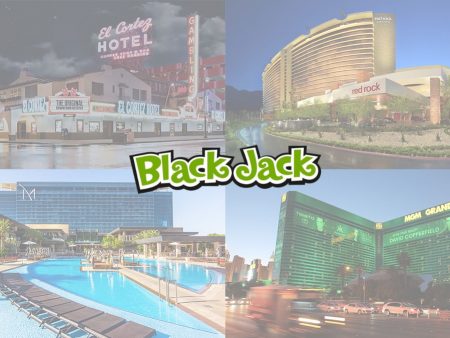Most people know that you should play fewer blackjack games if the rules for both are the same. If everything else is equal, the rule of thumb is that more decks mean a greater advantage for the house.
You can see the difference in house edge between a blackjack game that has eight decks and one with the same rules. If you want to keep your house edge below 1%, 0.6% can make a big difference.
Even an eight-deck game has a 0.3% advantage over a two-deck one. A casino will often have additional rules to go along with the deck differences to bring the house edge for their game closer.
House Edge and Basic Strategy are affected by the number of decks.
Although it might not seem that the number of decks makes a big difference, it could be. What’s the difference between a deck that has four of 52 cards that have aces and one that has 32 of 416 cards that have aces? There is still a 1/1 chance of getting an Ace.
This is because if you take a card out of a deck in a single-deck game, it will have a greater effect than if it was in a multi-deck game.
If you remove an ace from one deck, the probability of getting an Ace is now 3/51 or 1/17.
If you take the ace from an eight-deck pack, you’ll still have 31 cards of 415 that are aces. About 1 in 13.8 people have a chance of getting an Ace.
These are other considerations when considering basic Blackjack Strategy in single-deck versus multiple-deck blackjack games.
Multi-deck play will result in a natural less often
Blackjack is big on the natural. In fact, the game’s name is after the other word for natural. Blackjack pays at three to two odds. This is why blackjack is so mathematically rewarding.
A single-deck game will see a natural approximately once in every 20 or 21 hands. How did we arrive at that number?
There is a 1/113 chance that you will get an ace with your first card. To make the blackjack, you will need a 10, so you can use a 10. There are 16 cards that are worth 10 in a 51-card deck. This gives you a chance of getting a 10, of which there is a 16/51 probability.
You can get an ace and a 10, but only if you multiply these probabilities. In other words, multiply them. This would mean that the probability of a given event is 1/13 X (16/51), or 16/663.
However, this is not the only way you can get a blackjack. A 10 could be your first card and an Ace as your second, so that you can multiply the chance of getting an Ace and a 10, and the probability of getting a 10.
While the chance of getting an Ace on your first card is still 1/13 (or a 10 on your second), it is now 128/511.
1/13 X 128/511 = 1/28/6643
To double the chance of you getting the hands in the opposite order, multiply that by 256/6643. This is roughly the same probability as getting a blackjack at 1 in 26.
If percentages are more your thing, the probability of winning a blackjack in a single-deck game is about 4.8% (in single deck) and 3.8% (in eight-deck).
Multi-deck Blackjacks will give the dealer more chances to win a blackjack
You should also consider the possibility that the dealer will get a blackjack. You can get a push if you and the dealer get a blackjack.
A single-deck game will see the dealer get an ace as her initial card 3/5 times. (Notice how numbers change to reflect cards that have been dealt. She will get a 10 as her 2nd card 15/49 times.
Now you have 3/50 x 45/49. To account for the possibility of getting the blackjack in an opposite order, multiply that number by two and you will get approximately 90/2450. This is about 1 in 27.2 or 3.67%.
Remember what we have already discussed in this post, and what we showed in the last section. The effects of cards removed from a deck are less effective when there are more decks. These fractions’ denominators don’t change much.
The probability that the dealer will also get a blackjack and end up with a shove is about 1 in 22 instead of once out of 27 hands. You’ve already seen enough examples to know how I calculated it.
Doubling down doesn’t work as well with multiple decks
These aren’t the only differences in multi-deck games. Another example:
Let’s say your first two cards were a 9 or 2 and you have a total of 11. The dealer has a 6 showing. Anybody who is familiar with basic strategy will know that double down is the best move.
You want to score a 10, which will give your total of 21.
Out of 513 cards, there are 144 cards worth 10, which is the minimum amount of cards you can have in an eight-deck game. This is a 28.07% chance. This is a big difference.
It’s not that there aren’t more 10s in this deck. There are more cards that are worth 9, 2, or 6 in the deck.
Also Read: Your First Game of Blackjack in a Casino
Standing on a stiff hand doesn’t work as well with multiple decks
A stiff hand has a total of 12-16. These hands are not likely to win unimproved but are also more likely to bust
What advantages do single deck blackjack games offer to players?
Blackjack is one of the world’s oldest and most popular casino games. Due to its immense popularity, there has been a lot of research and discussion over the years about which type of strategy has the highest likelihood of success. One of the most hotly contested debates has been the comparison between single deck versus multiple deck blackjack strategy.
Single deck blackjack games are generally more advantageous for the player since they offer better odds and require less knowledge of basic strategy. Cards in single deck games are dealt face down, giving the player the option to count cards. This is much harder to do in a multiple deck game as the cards are constantly shuffled between hands. Counting cards in blackjack can give the player an edge in certain situations, such as when a deck is heavily loaded with high value cards. It can also be difficult to spot the dealer’s hole card in multiple deck games, as the cards in the deck are constantly being shuffled, giving the player an advantage when making decisions.
Multiple deck games, on the other hand, offer casinos more of an advantage. Casinos can easily adjust rules, such as allowing the dealer to hit on a soft 17, and use various strategies to reduce the player’s edge. For example, casinos can shuffle their decks more often, making it harder for the player to count the cards in play. They can also add more decks to the game, decreasing the chances of winning for the player. Additionally, multiple deck blackjack games often offer generous payouts on blackjacks, making them more attractive to players than single deck games.
Both single deck and multiple deck blackjack offer players different pros and cons. Ultimately it is up to the individual player to decide which type of blackjack game is best suited for their particular playing style. For conservative players who are trying to recoup losses from previous sessions, single deck games may be the best bet, while risk-takers may find that multiple deck games offer more potential for profit. No matter which version of the game players choose, they should always brush up on their basic strategy when playing for real money.









